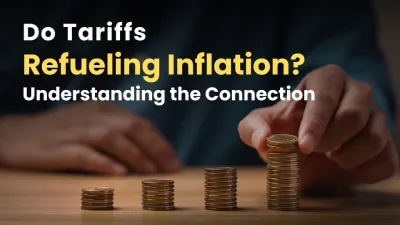简体中文
繁體中文
English
Pусский
日本語
ภาษาไทย
Tiếng Việt
Bahasa Indonesia
Español
हिन्दी
Filippiiniläinen
Français
Deutsch
Português
Türkçe
한국어
العربية
Investment suggestions for inflationary periods from Chris Brightman - Business Insider
Abstract:Chris Brightman, chief investment officer at Research Affiliates, says this "huge disinflationary environment" isn't perpetual. Here's how to prepare.
Chris Brightman, chief investment officer at Research Affiliates, thinks this current prolonged period of low inflation and interest rates will not go on in perpetuity. He says this period “isn't normal” and details three specific areas for investors to allocate to when inflation and interest rates start to creep higher.Click here for more BI Prime stories.With the unemployment rate at 50-year lows, consumer confidence at a seven-month high, and an accommodative monetary policy from the Federal Reserve, one would expect inflation — a sustained increase in prices — within the US economy to be running rampant. After all, in theory, a tight labor market and healthy consumer should push prices higher.But the opposite has been true. According to Bloomberg data, the Federal Reserve's favorite inflationary gauge has averaged just 1.5% in the past decade, running well below its targeted 2% benchmark. Chris Brightman, chief investment officer at Research Affiliates, doesn't think this trend will continue indefinitely. “We've been in this huge disinflationary environment that has greatly flattered the returns of traditional stocks and bonds,” he said on “The Meb Faber Show,” an investing podcast. “It's very, very difficult for most people to imagine that what has been normal during their entire professional career — isn't normal.”Brightman noted that since he began his investment career in 1982, inflation and interest rates have slowly and steadily trended lower. However, he said he's positive that this type of phenomenon “is not a perpetual environment.” At some point, inflation and interest rates will rise — and investors who aren't adequately prepared for the increase will feel the full brunt of impact.For bond investors, this spells bad news. Inflation chips away at investment returns and purchasing power. Equities behave slightly differently. Although stocks have historically fared better than bonds in inflationary periods, they're still susceptible to shorter-term unexpected rises.Tony DeSpirito, chief investment officer for fundamental US active equities at BlackRock, recently echoed Brightman's concerns when he called inflation “the hidden risk longer-term.”Still, there are ways to protect against inflation's insidious effects — and Brightman has identified three places that investors should allocate to in order to preserve their purchasing power.“When this reverses — and I'm sure it will reverse — you won't want to be in the sort of instruments that did so well during the disinflationary boom,” he said. “There are a number of traditional inflation-protecting asset classes.”Here are Brightman's three favorites.1. Treasury Inflation-Protected Securities (TIPS)“Perhaps the most obvious and least risky would be TIPS,” he said.Treasury Inflation-Protected Securities are a type of Treasury bond that is indexed to the consumer price index. When inflation rises, the principal value of TIPS increases and provides real-time protection.An investor looking to employ this strategy could do so by purchasing the SPDR Portfolio TIPS ETF. 2. Real Estate Investment Trusts (REITs)“REITs also offer a nice liquid, tradable, real-asset,” he said. “In the short run they're highly correlated with the US stock market, and for that reason they're probably pretty pricey in today's environment.”For the uninitiated, a real estate investment trust, or REIT, is a company that owns income-generating real estate.The thesis behind the suggestion is simple: Real estate rents and values generally increase along with an aggregate increase in prices. Therefore, REITs provide a solid return in the face of increasing inflationary forces.An investor looking to utilize Brightman's suggestion could purchase the Vanguard Real Estate Index Fund ETF. 3. Commodities “And then lastly I would probably say commodities as another liquid, publicly traded asset class that provides a measure of inflation protection,” he said. Commonly traded commodities include oil, gold, corn, soybeans, wheat, sugar, silver, and coffee. Similar to real estate rents and values, commodity prices generally rise when inflation heats up.In order to benefit from Brightman's suggestion, an investor could allocate a portion of their portfolio to the Invesco DB Commodity Index Tracking Fund. The fund focuses heavily on consumables, and is composed of futures contracts on 14 physical commodities.
Disclaimer:
The views in this article only represent the author's personal views, and do not constitute investment advice on this platform. This platform does not guarantee the accuracy, completeness and timeliness of the information in the article, and will not be liable for any loss caused by the use of or reliance on the information in the article.
Read more

Why Fed Keeps Interest Rates Unchanged, How Does It Affect To Forex Market?
Fed keeps interest rates at 4.25%–4.50%, impacting forex market. Dollar may rise as tariffs loom. Explore why rates unchanged and forex effects.

Do Tariffs Refueling Inflation? Understanding the Connection
Investigate how tariffs impact inflation. Learn how trade barriers influence prices and the broader economic landscape.

Will Trump's Trade Policies Fuel Inflation? BlackRock Warns of Economic Risks
Bitcoin and crypto prices plummet as recession fears and inflation warnings shake markets. Experts warn of prolonged economic challenges ahead.

How Will Central Bank Digital Currencies Could Shape Everything?
Central bank digital currencies (CBDCs) could reshape financial stability, addressing inflation, banking risks, and monetary policy challenges.
WikiFX Broker
Latest News
The Withdrawal Trap: How Scam Brokers Lure Victims into Paying More
FCA to Investors: Think Twice Before Trusting These Brokers
Trump\s tariffs: How could they affect the UK and your money
Trump gambles it all on global tariffs he\s wanted for decades
TradingView Brings Live Market Charts to Telegram Users with New Mini App
Trump tariffs: How will India navigate a world on the brink of a trade war?
Interactive Brokers Launches Forecast Contracts in Canada for Market Predictions
Authorities Alert: MAS Impersonation Scam Hits Singapore
IG Group Acquires Freetrade for £160M to Expand UK Investment Market
U.S. March ISM Manufacturing PMI Released
Currency Calculator







